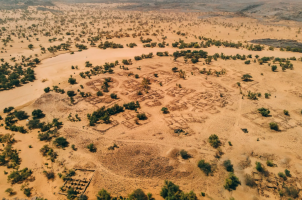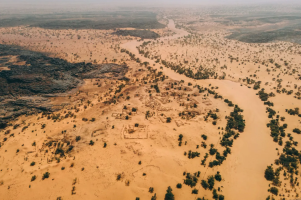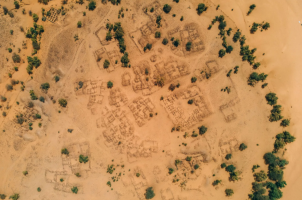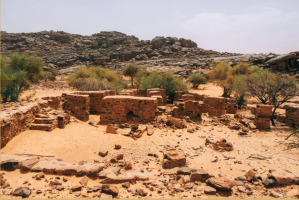Joined Sep 2024
122 Posts | 454+
USA
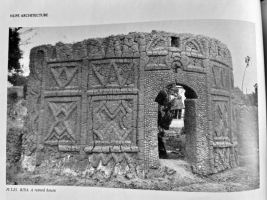



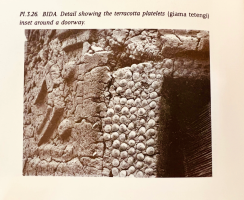


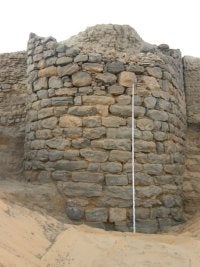
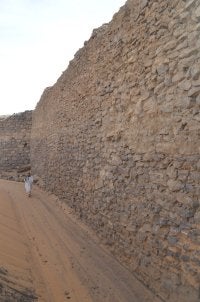
In many movies, ancient cities and costumes are often depicted as being larger or more elaborate than they were in reality for several reasons:
1. Epic Scale and Entertainment:
Audience expectations: Movies, especially historical epics, often aim to provide audiences with a sense of awe and grandeur.
Visual impact: Larger sets and elaborate costumes can be visually more appealing and help create a dramatic atmosphere.
Narrative emphasis: The scale of the environment and costumes can be used to emphasize the importance or power of the characters and the story being told.
Epic scale: Films like "Gladiator" may present a romanticized and visually striking version of history to appeal to audiences.
2. Artistic License and Creative Vision:
Storytelling: Filmmakers might prioritize storytelling over strict historical accuracy, using costumes and sets to convey character traits or themes.
Director's vision: The final look and feel of a film is often driven by the director's creative vision rather than historical facts.
Exaggerated features: Costume designers might exaggerate features or use specific colors/textiles to create a specific aesthetic or to highlight character dynamics.
3. Practicalities and Constraints:
Limited information: Historical documentation, especially for ancient periods, can be limited, making it difficult to achieve absolute accuracy in recreating sets and costumes.
Budget: Creating historically accurate costumes, especially intricate ones, can be expensive.
Time and accessibility: Recreating ancient materials and construction techniques can be time-consuming and challenging to source.
"Close enough": Given budget and time constraints, productions may opt for costumes that are "close enough" to the historical period rather than perfect replicas.
4. Audience Familiarity and Appeal:
Visual cues: Audiences may be more familiar with certain visual cues associated with historical periods, even if they are not entirely accurate.
Bland reality: Realistic costumes and settings might be perceived as bland or unappealing by audiences, particularly for those less familiar with the historical period.
Commercial appeal: Filmmakers may prioritize audience appeal and potential ticket sales over strict historical accuracy.
In summary: While historical accuracy is an important aspect of filmmaking, particularly for period pieces, there are various factors that contribute to the often inaccurate and oversized depictions of ancient cities and costumes in movies. These factors include creative choices, limitations in historical documentation, and practical considerations such as budget and time constraints, along with a focus on entertaining and engaging the audience.
While Assassin's Creed: Origins provides a visually stunning and generally well-researched virtual tour of ancient Egypt, it's not entirely accurate. The game takes liberties with geography, scale, and architectural details for gameplay purposes. For example, the pyramids are visible from Alexandria, which is incorrect as they are over 200km away. The game also adds vegetation and beautifies certain areas that likely didn't exist in that form.
Here's a more detailed breakdown:
Accuracy Issues:
Scale and Distance: The game compresses distances and alters the visibility of landmarks. For instance, the pyramids shouldn't be visible from Alexandria.
Vegetation and Beautification: The game adds vegetation and architectural details that may not have been present in the historical setting, making it visually appealing but less accurate.
Architectural Details: Some temples and buildings are either fictional or not accurately represented.
Sphinx Appearance: The Sphinx's facial features are not historically accurate in the game.
Geographical Features: Lake Mareotis is too large and too close to Giza.
Sand Color: The sand around Giza is depicted with a golden-orange hue, which is not accurate.
The movie Cleopatra (1963) is renowned for its extravagant sets and lavish production, including the recreation of ancient Alexandria. However, historical opinions on the accuracy of the sets and scale of the film's Alexandria portrayal can vary:
Some historical sources suggest inaccuracies: Many historians and experts criticize the film's historical accuracy regarding costumes, hairstyles, and certain events, and the film's architecture and furniture are also deemed "mostly wrong". While the film depicts Alexandria as a large and elaborate city, some sources point out that the portrayal of Alexandria's architecture and overall appearance may not be entirely accurate. Specifically, the film's Alexandria sets were built at Pinewood Studios and reportedly suffered from weather issues, indicating potential practical difficulties in creating a historically accurate representation.
In summary: While the film Cleopatra (1963) aimed for a grand and visually impressive portrayal of Alexandria, historical accuracy regarding the scale and details of the city's architecture is a subject of discussion and criticism.








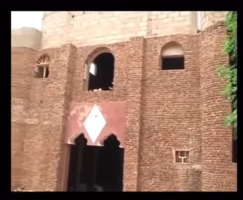


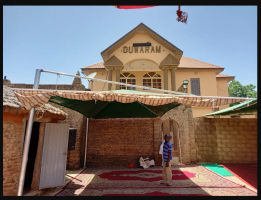


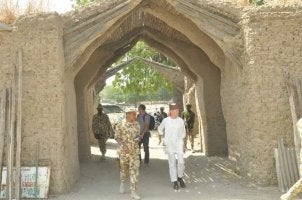




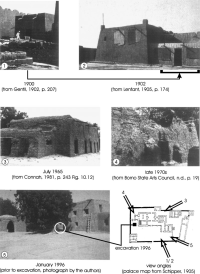

I'm super grateful for this! Thank you... I had already identified that collection as the source of much of Rattrays photographic archives, and just a few hours ago I was on that very site trying to get into the collection search, but my dumb ... had accidentally switched off functional cookies without realizing it so I was stuck, thinking the archive isn't accessible from outside the museum or somethingThanks again!
For sure... Oral histories are far from absolute... About the Kintampo complex, I read in an archaeological dig report a long time ago, from one of their sites, that they used logs arranged in vertical rows driven into the ground to make walls. I've seen that technique in a number of other locations across parrts of Africa, but don't immediately have pictures at hand. But it seems more than plausible that there were other groups in the region that employed earthen or wattle and daub architecture before Adansi. Also Adansi may not be the oldest Akan group at all. Bono Manso is another strong contender, more widely cited by historians as the origin of the Akan, while archaeologists will point to a proto-Akan and/or early Akan culture that has existed in the region since around the turn of the common era, far predating any oral traditions...
Anyway, on a totally unrelated note, I've been looking for a high resolution version of a particular engraving of Abomey, the capital of Dahomey, for well over a decade now without success. I still haven't found it, even though I know exactly where it's from. It's titled “Vue générale d’Abomey, capitale du Dahomey”, from Le Journal illustré, November 6th, 1892. I did just find a low/medium resolution version of the image, which isn't great, but it's infinitely better than the extremely low-res version floating around the net...
View attachment 76750
Oh this is very interesting. I have not seem this before. Can you tell me the source for the picture and the book @Hanno Akunna so I can further research this?Toucouleur Architecture and Facade in the interiors of their homes, Senegal.
View attachment 84125
View attachment 84127
View attachment 84129
View attachment 84131
Sure! I've gotten this source from an article called "Au Sénégal, sur les traces de Patrick Dujarric, Un architecte contemporain inspiré par l’architecture traditionnelle", which explains how contemporary structures are influenced by traditional architecture. It's in French, however.Oh this is very interesting. I have not seem this before. Can you tell me the source for the picture and the book @Hanno Akunna so I can further research this?
Thank you very muchSure! I've gotten this source from an article called "Au Sénégal, sur les traces de Patrick Dujarric, Un architecte contemporain inspiré par l’architecture traditionnelle", which explains how contemporary structures are influenced by traditional architecture. It's in French, however.
